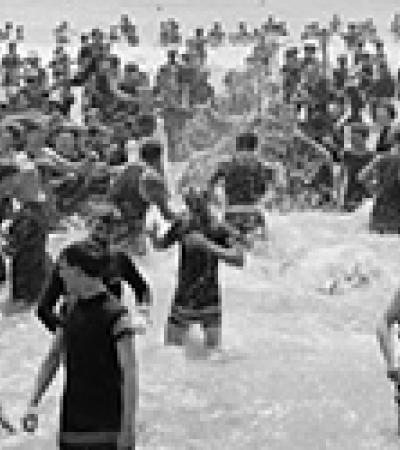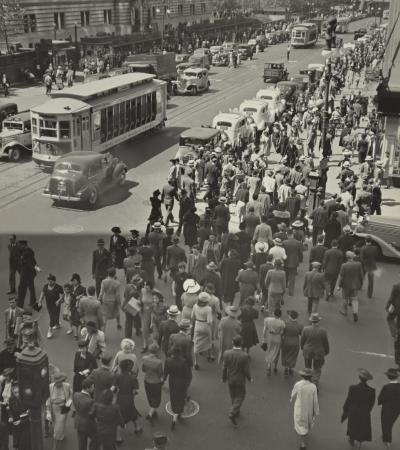This month EDSITEment is chock full of new lessons and resources marking significant events and celebrations within the May calendar, including Asian/Pacific American Heritage Month, Jewish American Heritage Month, the Mexican Revolution, and the fiftieth anniversary of the Freedom Riders.
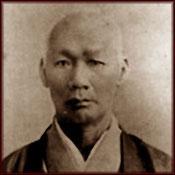
Asian/Pacific American Heritage Month
Asian/Pacific American Heritage Month was established in 1990 to mark the arrival of the first Japanese immigrant to the United States on May 7, 1843, as well as the anniversary of the completion of the transcontinental railroad on May 10, 1869. Asian/Pacific American Heritage Month provides the perfect opportunity for students of all ages to celebrate the history, arts, and culture of Pacific and Asian Americans.
The first Japanese national to set foot on American soil was a young fisherman named Manjiro, who was to become influential in ending Japan’s centuries of isolation. Though Manjiro’s name and legendary life story is celebrated by the children in contemporary Japan, fame has eluded him this side of the Pacific, where he remains a footnote in American maritime history. This month, EDSITEment honors Manjiro Nakanohama, also known as John Mung, by telling his story and offering students an interactive map of his voyage around the Pacific. Students may walk in the footsteps of Manjiro during his tenure as a school boy in Fairhaven Massachusetts, visit The Whitfield-Manjiro Friendship Society, and take a virtual tour of the sites where the immigrant Japanese boy lived as a teenager and came of age. A timeline worksheet of Manjiro’s life (PDF) is also available.
Students may then enter Manjiro’s world by way of Laura Jernegan: Girl on a Whaleship, a website funded by the National Endowment for the Humanities (NEH). This resource tells two stories: “The Story of Whaling,” which describes what happened on a nineteenth-century whaling voyage, and “Laura’s Story,” the story of a young girl from Edgartown, Massachusetts, who went with her family on a whaling voyage in and kept a journal of this adventure. The site also has several interactives that allow students to explore Laura’s journal, learn about whales, explore the ship, and view whaling routes.
Jewish American Heritage Month
Each May, EDSITEment also celebrates Jewish American Heritage Month by pointing to the rich array of educational resources on this subject, including those funded in part by NEH grants over the past decades. Each of them is accompanied by a multimedia website or webpage that extends the life of the program with video clips, images, and interactives that can be used by teachers in their classroom or students doing research.
The idea of America as both a haven and a home for people of myriad religious faiths who, over the centuries, have immigrated to the United States, is one that deeply resonates with most Americans. The blessings of religious and political liberty that these immigrants found in America were captured eloquently in George Washington’s letter to the Hebrew Congregation at Newport, Rhode Island, in 1790. In this letter, Washington quotes a sentence from the Book of Micah of the Hebrew Bible:
May the children of the stock of Abraham who dwell in this land continue to merit and enjoy the good will of the other inhabitants—while every one shall sit in safety under his own vine and fig tree and there shall be none to make him afraid.
The Mexican Revolution
On May 21, 1911, the Treaty of Ciudad Juárez was signed, concluding the initial phase of the Mexican Revolution. Viewers may learn all about this in the new NEH-funded documentary,
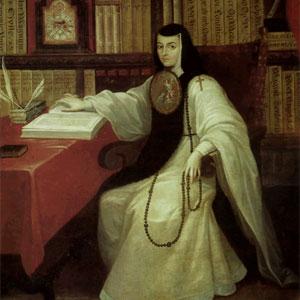
The Storm that Swept Mexico, which premiers May 15 on PBS stations nationwide. The main ideals of the Mexican Revolution grew out of the basic belief that a few wealthy landowners could no longer continue the old ways of the Spanish Colonial rule, a feudal-like system called la encomienda. Instead, it was thought the land should belong to all those who actually worked it and extracted its wealth through their labor. For more background on this movement, see EDSITEment’s bilingual feature commemorating the centennial of the Mexican Revolution, describing its artistic and cultural implications along with its musical legacy.
While we’re on the topic of Mexico, you’ll be interested to open the new EDSITEment lesson, Sor Juana the Nun and Writer: Las Redondillas and The Reply to learn why this seventeenth-century nun is called the first feminist in the New World. The lesson describes how Sor Juana defends her right to intellectual freedom as a woman and as a nun while affirming her dedication to her literary duties. It will help students study both Las redondillas, an indictment of men for what Sor Juana believed was hypocritical behavior, as well as her autobiographical Reply to the Very Illustrious Sor Philotea de la Cruz. Students can also learn how to analyze the sonnet form in Spanish.
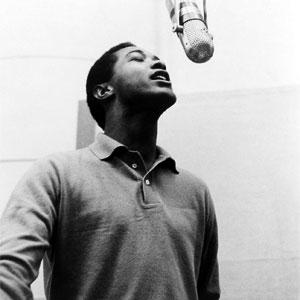
Freedom Riders
Board the bus with the Freedom Riders! Fifty years ago, on May 4, 1961, the first group of Riders set out from Washington, D.C., to risk their lives for their ideals. They were civil rights activists, black and white Americans, who had come together in a peaceful movement riding interstate buses through the Deep South to test the 1960 United States Supreme Court decision Boynton v. Virginia. Tune into PBS on May 16, when American Experience presents the riveting NEH-funded documentary Freedom Riders to commemorate these courageous citizens and tell their story to this generation.
EDSITEment brings you a new lesson! Freedom Riders and the Popular Music of the Civil Rights Era will deepen your engagement with the 1960s by listening to the spirited songs that inspired this great protest movement. “It’s been a long time coming, but I know a change is gonna come”—those words made up the chorus to R&B, Gospel, and pop singer Sam Cooke’s passionate track “A Change is Gonna Come.” The participants of the civil rights movement recognized the power of song and performance, and they used this form of cultural communication in their quest for equal justice under law. The popular music of the early 1960s offers a unique and engaging entry point into the politics surrounding equal rights in mid-twentieth-century America.
Through collaborative activities and presentations, students will find the meaning behind the music and compare and contrast the major figures, documents, and events of the day to better understand the political and cultural messages. The first activity of the lesson focuses on the Freedom Riders as a example of the interweaving of protest and music. In the second activity, students participate in an interview-based activity to develop skills in oral history and relate the past to the present. In the remaining activities, students will learn to analyze the meanings and messages behind the music and discover how such creative outpourings continue to play a vital role in the struggle for the civil rights.
About EDSITEment
Now in its thirteenth year, EDSITEment is a partnership among the National Endowment for the Humanities, Verizon Foundation’s Thinkfinity, and the National Trust for the Humanities. This free-access, user-friendly website showcases more than 300 top humanities sites that have been identified and reviewed for content, design, and educational impact in fields such as social studies, history, literature, foreign languages, art, and culture. EDSITEment also creates grade-specific lesson plans that incorporate online resources, original source materials, and interactive learning activities, games, and quizzes for use by K–12 teachers and students. Find out why the American Association of School Librarians selected EDSITEment as one the 25 Top Website for Teaching and Learning for 2010.

